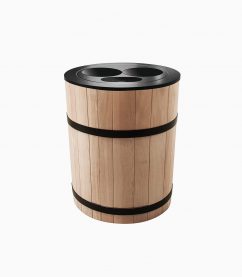However, you shouldn’t think of financial statements–or construction accounting–as a retrospective practice. As much as they can tell you where you’ve been, they can tell you where you’re going and what to do next. Giving you the power to predict the financial future and growth of your business.
Ensure that total assets equal the sum of liabilities and equity, reflecting the company’s financial position. Identifying which locations, events, items, or services bring in the most cash hard costs vs soft costs for office construction budgets flow is key to better financial management. Use that information to allocate resources to more profitable parts of your business and cuts costs in areas that are lagging.
Not only will this help you prepare for tax time, but it provides an accurate accounting of profitability for each contract. Since construction accounting is project-centric, you’ll need a way to track, categorize, and report transactions for each job. Your company may manage short- and long-term contracts, often with varying end dates.
- Janet Berry-Johnson, CPA, is a freelance writer with over a decade of experience working on both the tax and audit sides of an accounting firm.
- You’ll want to include a description of each transaction, the date of the transaction, and the revenue received.
- As a contractor, your company may provide services such as construction, renovation, or maintenance.
- Now that you have learned the essential parts comprising a chart of accounts, you can engineer a COA that grows with your construction business and helps you succeed.
- If there are expenses that aren’t getting categorized correctly, look at redefining or renaming accounts to make them clearer.
XOA TAX – Your Partner in Construction Accounting
Managing payroll for construction workers can be complex due to varying pay rates, overtime, and compliance with labor laws. QMK Consulting provides comprehensive payroll services tailored for construction companies, ensuring that all workers are paid accurately and on time while adhering to legal requirements. Each project may require dedicated accounts to track its unique income and expenses, facilitating precise job costing. Improving your process starts with understanding how construction accounting is unique, and determining the different types of job costs you can incur on each project. If your construction business follows generally accepted accounting principles, you should use the percentage of completion method for financial statements as well.
How to Create a Chart of Accounts for a Construction Company in 2024
An overly detailed COA can become difficult to navigate, increasing the risk of errors and inefficiencies. Focus on creating only the most essential and meaningful accounts, using subaccounts sparingly to capture necessary details without overcrowding the main COA. When paying subcontractors, the amount is recorded as an expense in the “Subcontractor Expenses” account and as a decrease in the “Accounts Payable” account.
Streamline your accounting and save time
If you’re a contractor, there are two fundamental ways to recognize income — completed contract or percentage of completion. The best bet is to start with a fairly standard chart, add accounts you know you want to track that are specific for your company, and then wait a couple of months and reevaluate. If there are expenses that aren’t getting categorized correctly, look at redefining or renaming accounts to make them clearer. There is a generally accepted numbering structure for the accounts, so everyone’s accounts appear in roughly the same order.
When done well, your chart of accounts ensures your financial statements accurately reflect the health of your company and helps you analyze your data to make informed decisions for your business. Being in the construction industry, you know that having a blueprint is essential before you start doing any work at the construction site. When it comes to accounting and finances in general, a chart of accounts is your blueprint.
40% of CFOs confirm that reporting demands have increased and the reliable insight into 501c3 for dummies financial health and performance becomes a top priority. In this case, COA becomes a hub of financial data pulled from across the company. Now that you have learned the essential parts comprising a chart of accounts, you can engineer a COA that grows with your construction business and helps you succeed. Keeping track of all the money moving in and out of your construction business can be challenging. What if you had to quickly find out the dollar amount on an invoice that was issued a year ago? You might have to rummage through a pile of paperwork, going through orders one by one for hours.
To simplify this, the balance sheet is your high-level view of finances from year to year. Underneath top 20 accounting interview questions with answers the balance sheet falls the income statement which depicts a specific period of time–the month of May, for example. Like I mentioned before, you should organize your chart of accounts in a way that makes sense for your organization. The goal is to structure them in a way that gives you adequate insight into where your revenue comes from and which areas are worth growing.


























